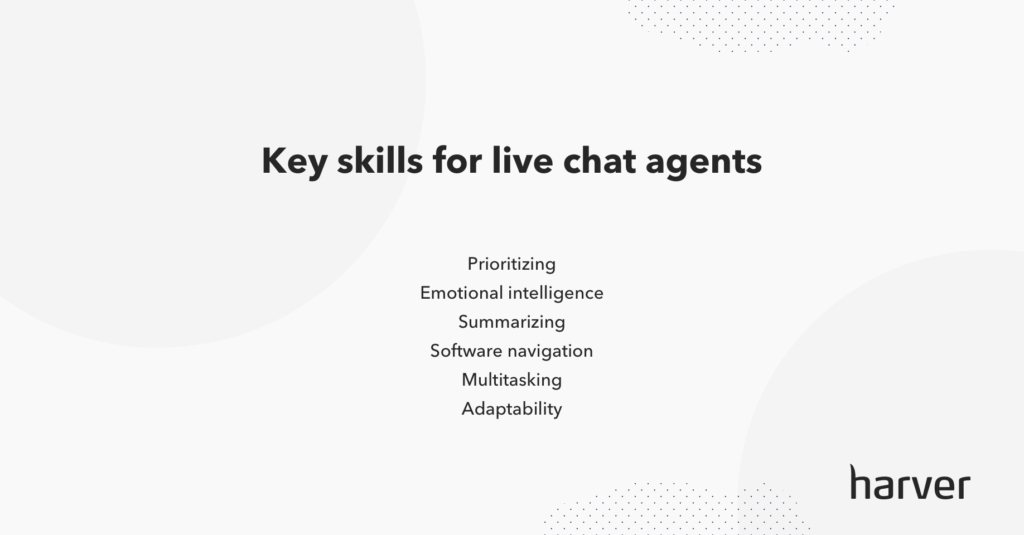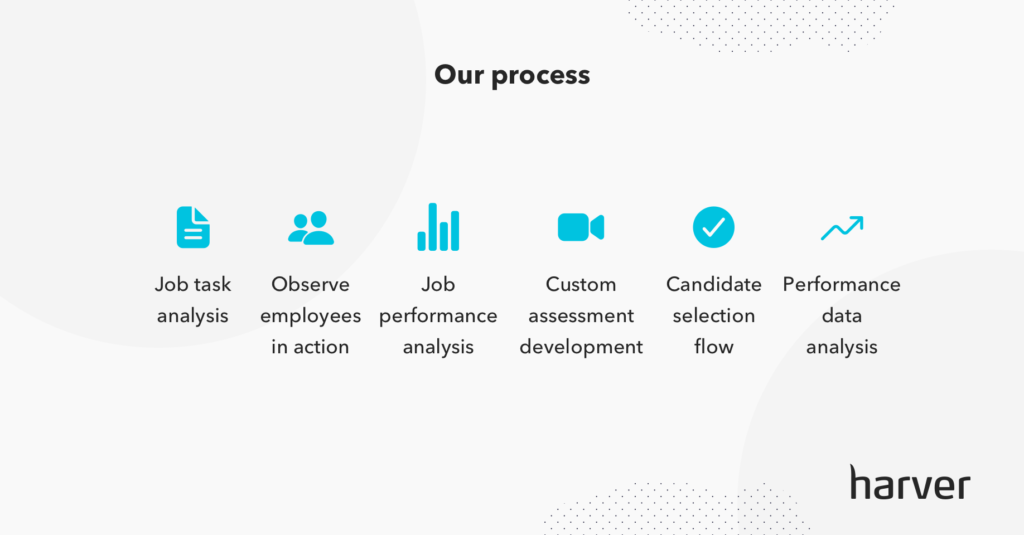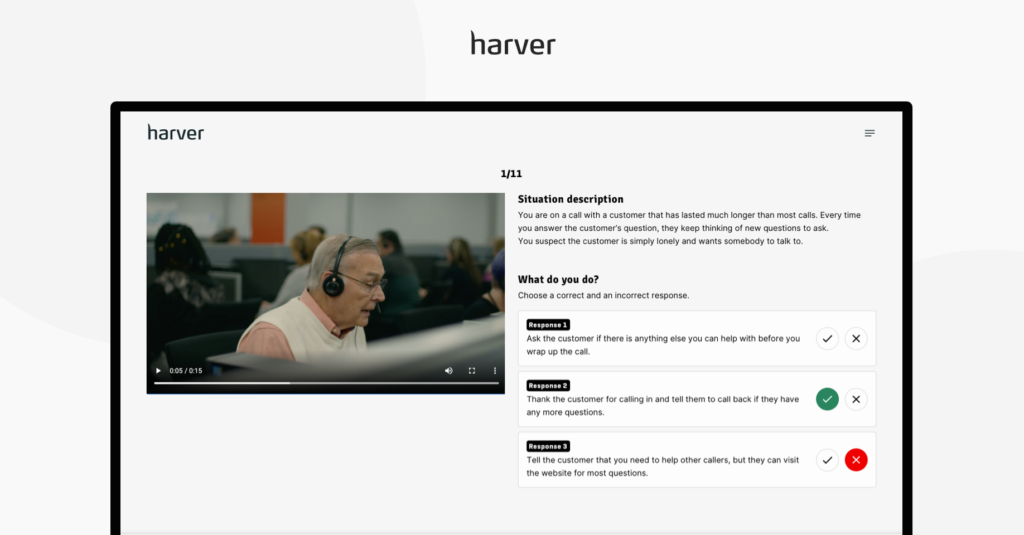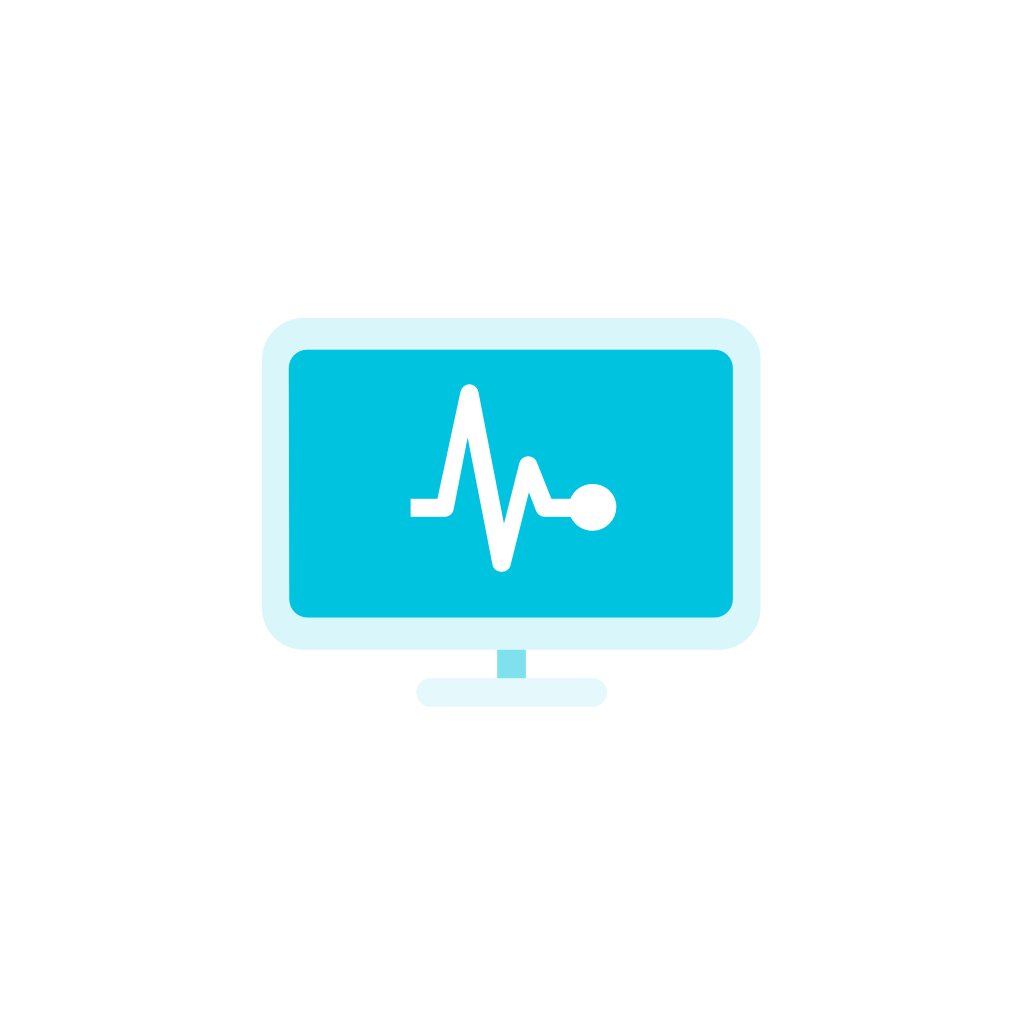The contact center and business process outsourcing (BPO) industry is growing fast. The BPO market alone is expected to hit $435 million by 2028 and is growing at a rate of 8.5% annually.
To support this kind of growth, your recruiting team are going to need to hire a lot of great call and live chat agents. And not only do you need to hire qualified candidates who have all the right skills for the job, you need to find ones who are a right fit for your organization too.
Right now, call centers and BPOs are dealing with extremely high attrition rates – almost three times the attrition rate of other industries – and this is primarily because their selection process isn’t fit for purpose.
Many organizations continue to rely on CVs and cover letters, or out-of-the-box assessments and tests for their recruitment process. They use their assessments to create candidate profiles, and use these profiles to manually select the candidates they want to hire.
But this isn’t an efficient selection process when you’re hiring at scale, and it won’t get you right-fit candidates you’re looking for. Processes like this lead to poor-fit hires, who often don’t actually have the skills needed (78% of candidates lie about their past experience, so CVs can’t be considered proof of skill), but they also don’t fit the culture.
You need a candidate selection flow that uses hard proof to identify the skills you need and at the same time give the candidate a clear picture of what the job is like so they can decide if it’s a right fit for them too.
So before we look at the kinds of assessments to include in your candidate selection flow for contact center roles, what skills you should be looking for to fill your open positions?
What’s in?
Like what you see?
Don’t miss out. Subscribe to our quarterly digest to get the latest TA and TM resources delivered right to your inbox.
Customer service qualities for contact center and BPO candidates
Whether your hiring managers are recruiting for phone or live chat agent roles, there are a few crossover skills and competencies to look for in new employees when recruiting for contact centers and BPOs.
As support agents, their entire role revolves around them communicating with customers all day, interpreting their problems and coming up with quick solutions. Therefore, the qualities of good customer service to look for all boil down to them being good communicators, problem solvers and having strong organizational skills.

When we talk about having good communication skills, this includes being an active listener, paying close attention to a customer’s issue and providing a clear and concise response, either verbally or in writing. When assessing for great problem solvers, you’d want to look for skills like good problem analysis, critical thinking and
As agents will be juggling multiple requests at once, they also need to be organized individuals who are good at multitasking, know how to prioritize tasks and can perform their jobs with speed without sacrificing accuracy.
And finally, as support agent roles involve a fair amount of computer proficiency, you’d also need to look for skills like technical ability and learning adaptability so you can be confident they can cope with the technical side of the job.
- White paper
Before you continue!
Don’t forget to grab your free copy of our white paper on contact center volume hiring in 2021. Learn about:
- The challenges currently shaping the contact e
center recruitment space - How employers can navigate the new remote-first reality, and the role of technology in a future-proof recruitment process
- The four building blocks of a fully digital recruitment process

How to design your candidate selection flow to assess customer service attributes
Finding the right candidates who possess important qualities of good customer service isn’t always going to be easy, especially in a tight labor market. This is why a well-designed selection flow is so crucial in contact center and BPO hiring.
The goal of the selection process isn’t just to assess each candidate’s skills to understand their profile but to identify all candidates in your talent pool who fit both your specific roles and your specific company culture.
This is where using out-of-the-box assessments and random combinations of tests for your hiring process will never help you hire great candidates at scale. All this will do is filter out good candidates and provide you with job seekers who are good on paper but aren’t right for your organization, so they leave the job soon after starting.
The way to find contact center candidates who are a perfect match for your organization is to design a custom selection flow that reflects everything about your roles, your organization and culture.
To design your flow, start with a job task analysis to understand exactly what your role entails and what skills and characteristics each job requires. You can then develop your custom assessment around deriving those required skills as opposed to the other way around, which is the mistake a lot of hiring teams make.

Another reason out-of-the-box assessments don’t cater to your volume hiring needs is that they often lead to very linear processes that can’t adapt to fluctuating labor markets. If your process is designed to filter out all candidates who don’t pass certain filters, this could see your applicant volumes going down, which is not what you want in a skills shortage.
A custom selection flow that responds to a labour shortage will use assessments as a way of matching candidates to the right roles instead of filtering them out because they don’t tick each and every box for one particular role.
On top of this, standard assessments also don’t cater to candidate experience. They focus on providing recruiters with answers, instead of providing candidates with insight, and this inevitably results in application drop-offs (because the candidate isn’t engaged in the process) and high attrition (because the candidate has misaligned expectations of what the role will be like).
Candidate selection flows should also be about letting the candidate decide if the role is right for them. By including job simulations and virtual job tryouts in your selection flow, you’ll give candidates insight into the job and provide a more engaging, interactive experience for them too.
Example candidate selection flow for BPO and contact center roles
So now that we know what skills and competencies to assess for, what would the custom candidate selection flow for BPOs and contact centers actually look like?
Here’s an example flow to consider.

And here’s a breakdown of what each assessment is and why you would include them in your selection flow when looking for great contact center candidates:
Availability – Which days and locations are the candidates available to work? They might not have the right availability for one role but could fit well for another. This stage would allow the technology to match the candidate up to other opportunities rather than filter them out.
Language proficiency – A language proficiency assessment is essentially a communication test. How clearly and concisely can candidates communicate in the required language? If you’re hiring globally for remote BPO agents, the required language might not be their first language, so it’s essential that you assess them for the level of proficiency they need to do the job.
System diagnostics – If you’re hiring remote contact center agents, you will need to ensure that the technology they’re going to be using to do their job meets the required standards. A system checker assessment will give you insights into things like download and network speed as well as their operating system.
Personality questionnaire – A psychometrically validated personality questionnaire will tell you a lot about whether a candidate fits your company culture and values. It will also give you insight into what motivates them, which can be a good indicator of whether attrition is likely.
Live chat simulation – A realistic job preview stage where the candidate gets to perform tasks similar to those on the job will not only give you an accurate prediction of future performance, but give the candidate an idea of what they can expect if hired and allow them to self-qualify. Live chat simulations are also engaging for candidates and are proven to reduce attrition too.
Experience our best-in-class Live Chat Assessment first-hand!
Perfect for remote hiring, our live chat assessment makes it easier than ever to hire live chat agents. Candidates experience the job, while you get actionable data to drive hiring decisions.
Typing test – With contact center roles, you naturally have a need for strong typing skills. Not only do candidates need to be able to type quickly, but they need to do so without sacrificing attention to detail, and be able to juggle multiple cases at once. A typing test is a good way to assess these skills.
SJTs – Situational judgment tests will help you assess the candidate’s behavioral tendencies and what kind of roles they’d be best suited for based on these. Candidates are given job-specific scenarios and asked what they think would be the most and least appropriate responses.

How to know if the selection process is working
To ensure your custom selection flow is doing the job you need it to do, assign some goals before you put it into practice. What would indicate a successful hiring process for your organization?
In contact center and BPO recruitment, you might focus on something like increased quality of hire or reduced call center turnover rate.
“We really wanted a solution that was objective and scientific, to help us take the guesswork out from trying to decide who would be the best hire. We wanted something that would drive consistency and help us make more objective hiring decisions.“
— Sr. Director of HR, A Global BPO
Deciding which goals are important will mean you have clear KPIs that relate to these goals, which will make it easy to spot any issues and make improvements if necessary.
How do your KPIs look before and after using your custom selection flow? Your main metrics to focus on would be, for example, the quality of hire, the 30-60-90 day attrition rate, the candidate satisfaction score, and the efficiency of the hiring process. If these metrics don’t improve after you implement a custom flow, then you can start thinking about process adjustments.
But be aware that some candidate drop-off can actually be a good thing.
For example, you might think that the selection flow is not effective when you see that a high percentage of applicants drop off after a personality questionnaire or SJT. But this can also mean your custom flow is helping disqualify poor-fitting candidates, which reduces workload for location managers, who can focus their time on interviewing candidates whole will be a better fit.
If you build your custom flow with Harver, you’ll have full visibility of all these important metrics through our BI solution. Essentially, if it’s a metric worth measuring, you’ll find it on the Harver recruitment dashboards.
What next?
With a custom selection flow like the example in this guide, Harver will help you transform your hiring process and fill your contact centers with right-fit agents who are perfectly suited to your organization.
If you’d like to see how Harver can transform your contact center and BPO hiring process, you can book a demo below.
Ready to transform your hiring process?






